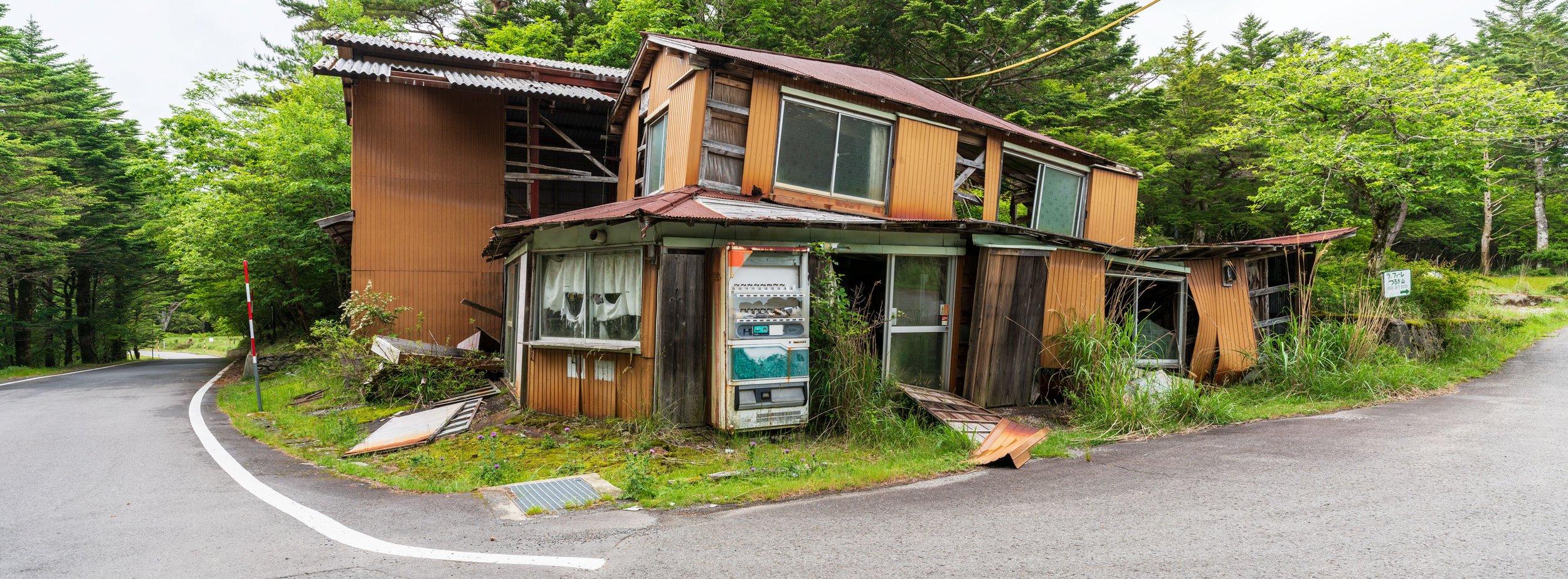Nagoro Village, located in the remote Iya Valley of Shikoku, Japan, is renowned for its unique and somewhat eerie population of scarecrows. Sometimes referred to as the "Scarecrow Village," Nagoro has gained international attention due to the work of one of its residents, Ayano Tsukimi, who has been creating lifelike scarecrow dolls for several decades.
Nagoro Town Center - Hasselblad X2D 21mm f11 X-Pan Format
The feeling of visiting Nagoro Village is a mix of curiosity, fascination, and a sense of the surreal. While some may find it eerie or unsettling, others appreciate the artistic expression and the opportunity to reflect on broader cultural and societal themes. It's a destination that sparks conversation and contemplation, making it a unique and memorable experience for those who visit.
Nagoro School - Hasselblad X2D 21mm f11 X-Pan Format
Ayano Tsukimi, an artist and former resident of Nagoro, started making scarecrow dolls to replace the dwindling human population in the village. With a declining birthrate and young people leaving for better opportunities in larger cities, Nagoro's population was rapidly shrinking. To fill the void and bring life back to the village, Tsukimi began crafting scarecrows in the likeness of the former villagers who had either moved away or passed away.
Nagoro School “Gym reunion” Hasselblad X2D f11 X-Pan Format
The scarecrow population in Nagoro is estimated to outnumber the human population by a significant margin. There are reportedly over 350 scarecrow dolls in the village, which is much higher than the actual human population.
What sets Nagoro's scarecrows apart is their astonishing level of detail and realism. Tsukimi meticulously creates each scarecrow to resemble a former resident, complete with clothing, accessories, and even facial features. Some scarecrows are engaged in everyday activities, like farming or sitting on a bench, adding to the surreal atmosphere of the village.
Nagoro Village “Lonely Elder” Hasselblad X2D 21mm f11 X-Pan Format
Nagoro has become a tourist attraction in recent years, drawing visitors from Japan and around the world who come to see the scarecrows and learn about the village's unique history. The scarecrows are scattered throughout the village, making it an eerie yet fascinating place to explore.
Nagoro Village “The Curious Neighborhood” Hasselblad X2D 21mm X-Pan Format
Ayano Tsukimi's work in Nagoro has not only preserved the memory of the village's former residents but has also brought attention to the challenges faced by rural communities in Japan as they grapple with depopulation and aging populations. Her work has become a symbol of resilience and the desire to maintain a connection to one's roots.
Nagoro Village and its scarecrow population have garnered international curiosity and intrigue, and it continues to be a one-of-a-kind destination for those interested in unique cultural phenomena and the preservation of rural traditions in Japan.






